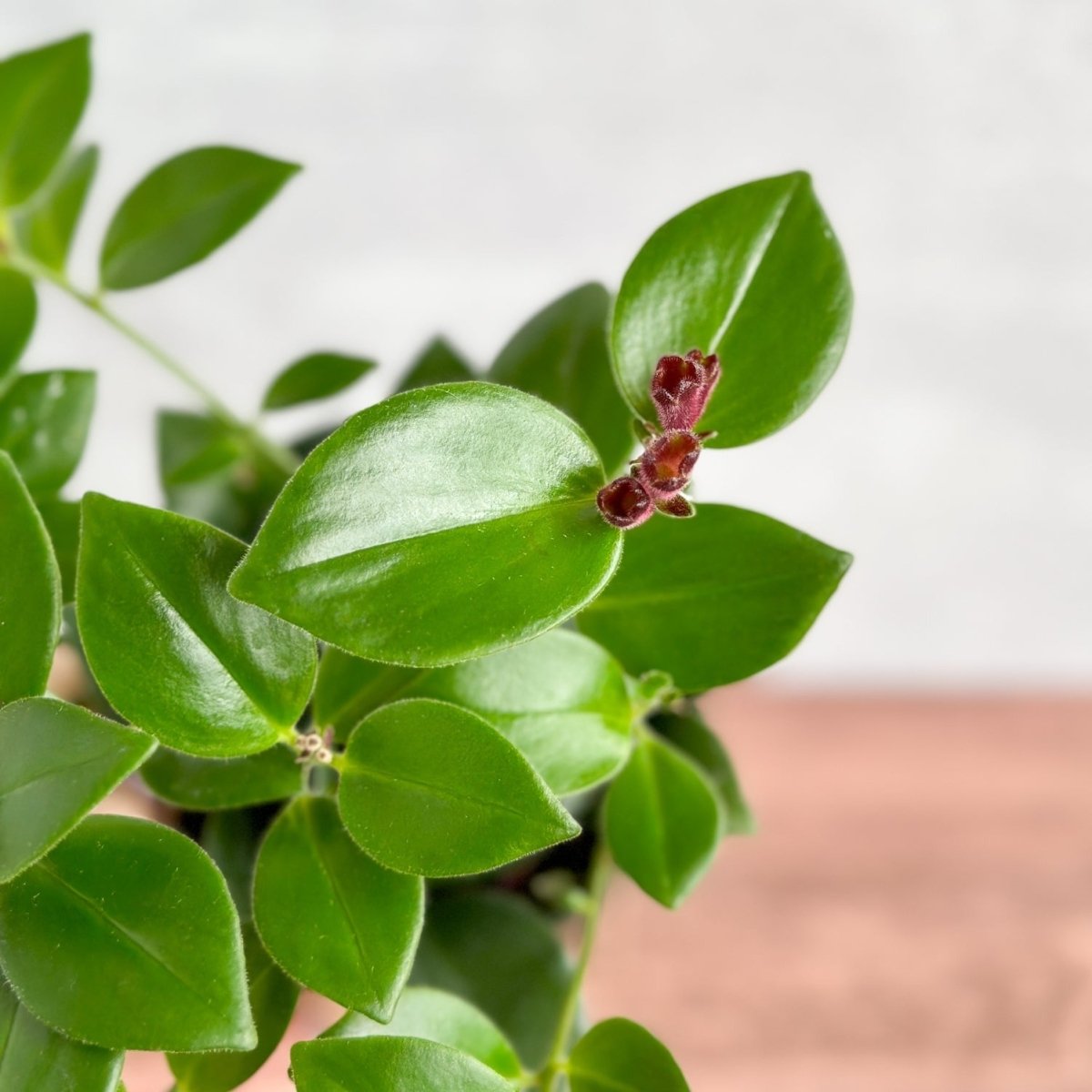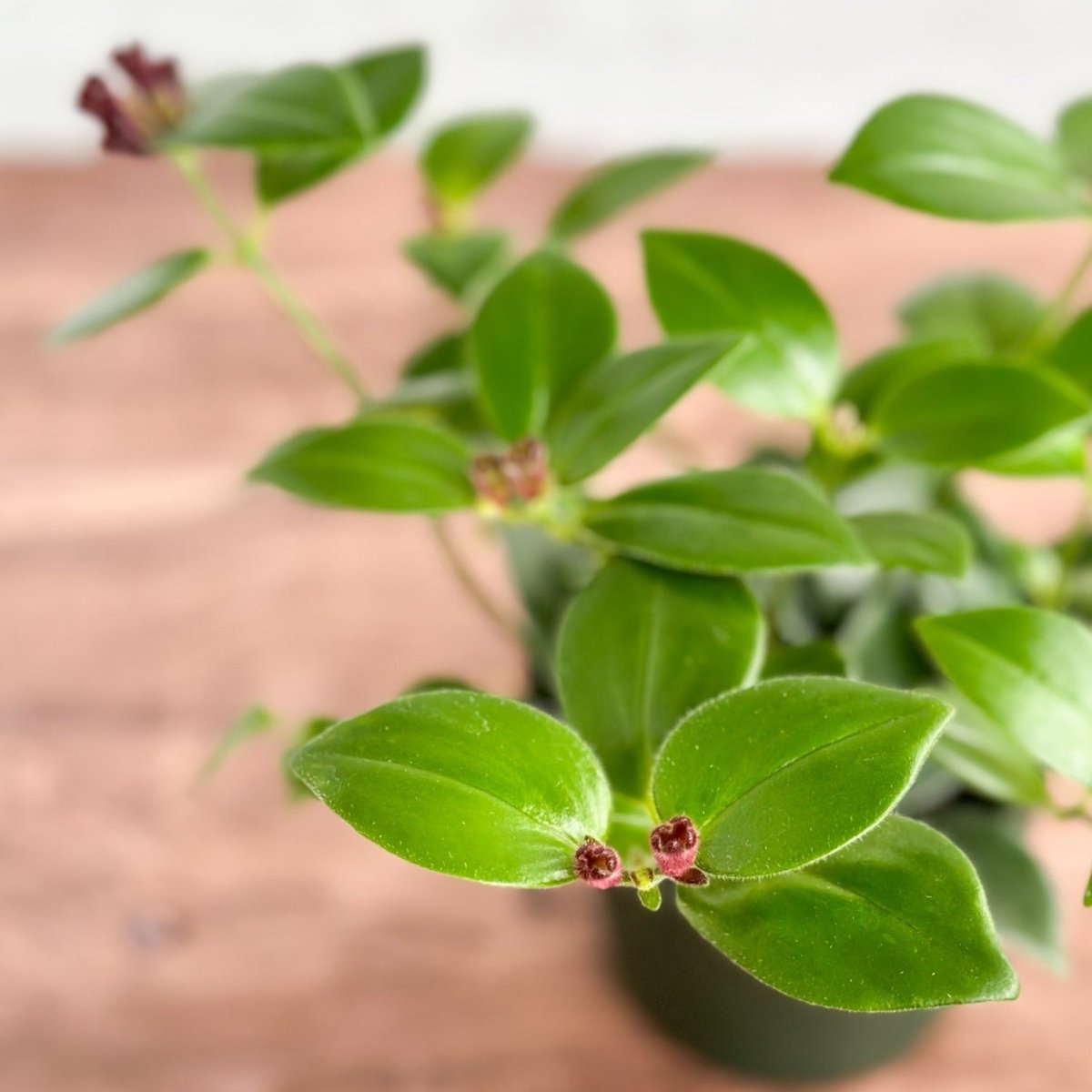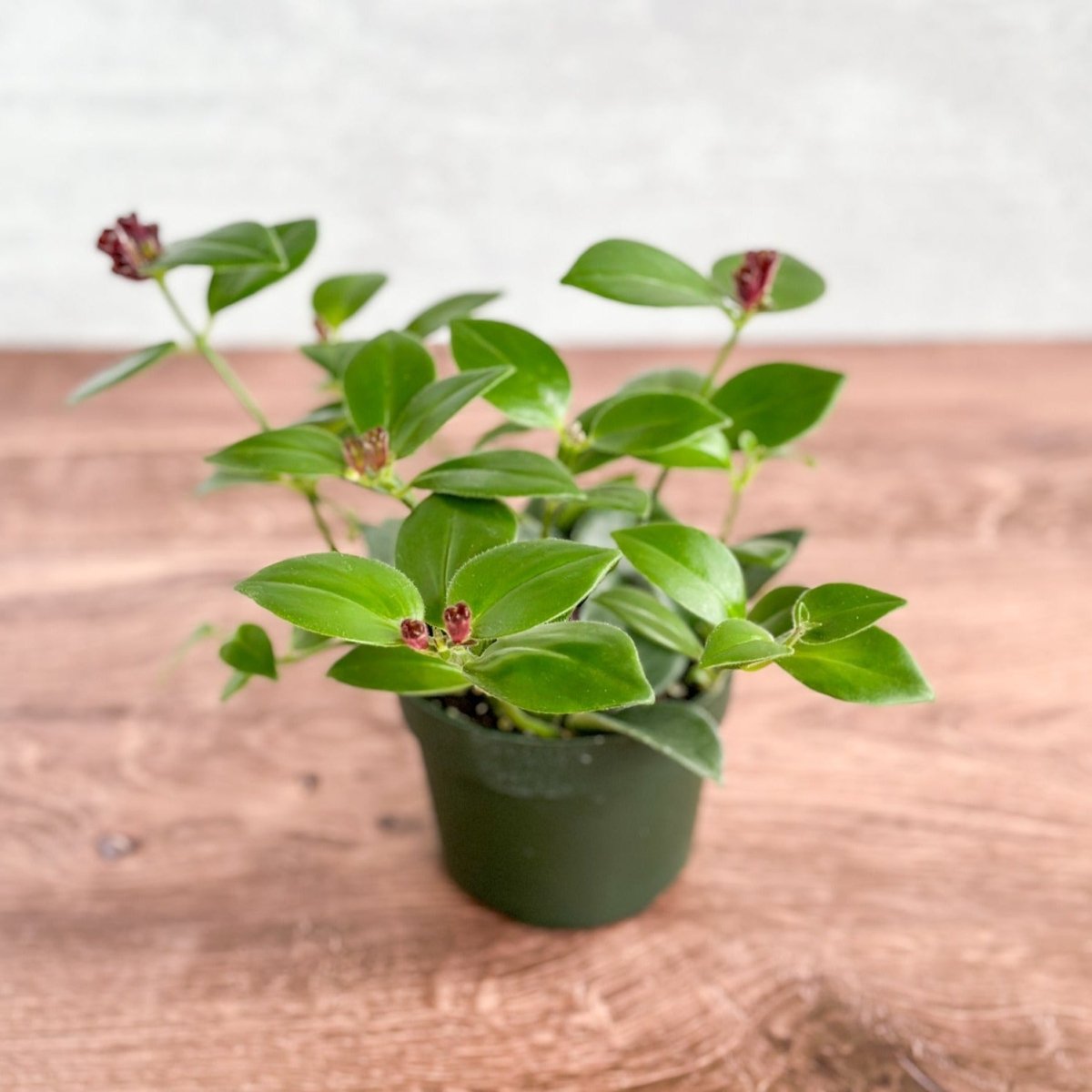Aeschynanthus radicans 'Mona Lisa' - Mona Lisa Lipstick Plant Hanging Basket
Aeschynanthus radicans 'Mona Lisa' - Mona Lisa Lipstick Plant Hanging Basket - 8" Hanging Basket is backordered and will ship as soon as it is back in stock.
Couldn't load pickup availability
Description
Description
Meet the Mona Lisa Lipstick Plant: A Vibrant Beauty with a Unique Twist!
Looking to add a splash of color and a hint of mystery to your indoor jungle? The Mona Lisa Lipstick Plant is the perfect addition! With its glossy green leaves and striking, tubular red flowers, this plant is a real showstopper. Whether draping from a shelf or cascading from a hanging pot, it adds a touch of tropical elegance to any space. Plus, it’s low-maintenance, making it ideal for both novice and seasoned plant parents alike!
Mona Lisa Lipstick Plant Profile
- Botanical Name: Aeschynanthus radicans 'Mona Lisa,'
-
Common Name(s): Lipstick Plant Mona Lisa plant, Mona Lisa Lipstick Plant
- Family: Gesneriaceae
- Native Range: Vietnam, Malaysia & Thailand
Mona Lisa Lipstick Plant Care Guide
- Care Level: Easy
- Light: Medium light to partial shade
- Water: Allow to dry fully between waterings
- Humidity: Basic household humidity
- Temperature: 75-85F
- Pruning: Prune as needed to remove brown or dead leaves.
- Feeding: Fertilize using a general-purpose houseplant fertilizer monthly during spring and summer
- Propagation: Stem Cuttings
- Growth: Vining, Bushy
- Common Pests: Look out for aphids, mealybugs, and mites
- Toxicity: Known to be nontoxic to dogs, cats and humans
Fun Fact About the Mona Lisa Lipstick Plant: It’s a Flowering Wonder!
Did you know that the Mona Lisa Lipstick Plant can produce flowers all year round with the right care? This plant is famous for its long-lasting, vibrant blooms that not only brighten your space but also attract pollinators, making it a favorite among plant lovers!
History of the Mona Lisa Lipstick Plant
The Mona Lisa Lipstick Plant hails from the lush rainforests of Southeast Asia, where it thrives in the undergrowth, embracing the shade of larger plants. Its name is inspired by the beauty and mystery of the famous painting, capturing the attention of horticulturists and plant enthusiasts alike. Over the years, it has been cultivated for its stunning flowers and glossy leaves, becoming a popular choice for indoor gardens around the globe. Its resilience and beauty have made it a sought-after plant for those looking to bring a touch of the tropics indoors.
Looking for houseplants that are safe for your furry friends? Check out our Guide to pet-friendly plants and learn how to create a vibrant, pet-safe space today!
Keep Your Plants Cozy with Heat Packs
Frequently Asked Questions
Shipping
How do you ship your plants?
How do you ship your plants?
We carefully package each plant with love by hand right from our shop in Brooklyn. Extra steps are taken to ensure that every leaf arrives in pristine shape by using polyfill and encapsulating the plant in a protective paper sleeve. The soil is also hydrated before shipping so that the plant has plenty of water for it's travel to your doorstep. We offer several shipping speeds, so please choose the one that you feel comfortable with depending on your location.
Will my plant look like the one on the website?
Will my plant look like the one on the website?
Awesome question, we're glad you asked. Given the nature of our plant shop, we're constantly moving plants in and out of the shop, making it difficult and borderline impossible to keep an exact picture of each plant. In addition to the constantly rotating crop, we often grow in batches of 6, 12, or sometimes more! With this quantity we are unable to take a photo of each and every plant. The photos that we attach to each product listing is going to be of a plant that represents the average size and fullness of that set of plants. Some may be slightly larger or smaller, but in general, similar.
Do you include heat packs with your plants?
Do you include heat packs with your plants?
We offer Heat Packs for sale separately from the plants in 40, 60 and 72 hour increments. Please add a heat pack or two to your order if you live in an area where your order may be affected during transit by cold temperatures. We are not responsible for orders that are placed and damage is incurred to the plant if a heat pack is not purchased.
Which heat pack should I choose?
Which heat pack should I choose?
Heat packs come in three different increments, so please choose the appropriate hour increment depending on the speed of shipping that you choose during checkout. For example, if you choose a cheaper shipping option that will take longer, please select the 72 hour heat pack. If you've chosen a shorter method of shipping, the 40 or 60 hour increment would work! We like to encourage our customers to always get more than you need, just to be on the safe side!
How long will it take to receive my order?
How long will it take to receive my order?
Standard shipping normally takes 3-5 days. Next day shipping is available on all domestic orders (for an additional charge). International shipping times depend on the products and destination (estimated at checkout).
Do you offer express shipping?
Do you offer express shipping?
All orders are shipped 5-8 business days from the date it is placed. Please note that as a small plant shop, we do everything in our power to get orders out as fast as we can in the order that they come in. If you have circumstances that require expedited fulfillment, please connect with you and we can potentially offer options.
What countries do you ship to?
What countries do you ship to?
We ship our selection of rare, healthy, and unique houseplants all across the United States including California. At this time, due to customs and agricultural limitations, we are unable to ship plants internationally from the United States.
Returns and Refunds
How do I return a product?
How do I return a product?
Items must be returned within 30 days after receiving your order. Items must be returned in the same condition in which they were received, be unworn/unused, have any tags still attached, and include all the original packaging.
How long will it take to receive my refund?
How long will it take to receive my refund?
Refunds are processed within 7 days from when we receive the item(s).
What should I do if my plant arrives in poor shape?
What should I do if my plant arrives in poor shape?
In the extremely unlikely event that your plant arrives in less than perfect condition, you're covered by our 15-day plant health guarantee. Simply snap a photo of your plant and send it over to us. We'll happily take a peek and offer suggestions on how to perk it back up, offer a store credit, or send a replacement. We like to make it as easy as possible!
Can I return or exchange a plant?
Can I return or exchange a plant?
At this time, we do not accept returns on plants. In extreme circumstances where a return of a plant is necessary, the customer is responsible for the return shipping and a refund will only be issued if the plant arrives back to us in living condition.









